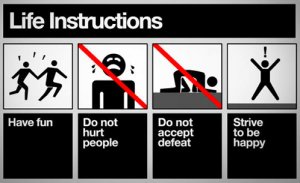Recently, researchers in Finland made the discovery that some people’s bodies do not respond as expected to weight training, others don’t respond to endurance exercise and, in some lamentable cases, some don’t respond to either. In other words, there are those who just do not become fitter or stronger, no matter what exercise they undertake. To reach this conclusion, the researchers enrolled 175 sedentary adults in a 21-week exercise program. Some lifted weights twice a week. Others jogged or walked. Some did both. Before and after the program, the volunteers’ fitness and muscular strength were assessed. At the end of the 21 weeks, the results, published earlier this year in Medicine and Science in Sports and Exercise, were mixed. In the combined strength-and-endurance-exercise program, the volunteers’ physiological improvement ranged from a negative 8 percent (meaning they became 8 percent less fit) to a positive 42 percent. The results were similar in the groups that undertook only strength or only endurance training. Some improved their strength enormously, some not at all. Others became aerobically fitter but not stronger, while still others showed no improvements in either area. Only a fortunate few became both fitter and more buff. As the researchers from the University of Jyvaskyla wrote with some understatement, “large individual differences” exist “in the responses to both endurance and strength training.”
Hidden away in the results of almost any study of exercise programs is the fact that some people do not respond at all, while others respond at an unusually high rate. Averaged, the results may suggest that a certain exercise program reliably will produce certain results — that jogging, say, three times a week for a month will improve VO2max (maximal oxygen capacity) or reduce blood pressure; and for almost any given group of exercisers, those results are likely to hold true. But for outliers, the impacts can be quite different. Their VO2max won’t budge, or it will fall, or it will soar.
The implications of such wide variety in response are huge. In looking at the population as a whole, writes Jamie Timmons, a professor of systems biology at the Royal Veterinary College in London, in a review article published last month in The Journal of Applied Physiology, the findings suggest that “there will be millions of humans that cannot improve their aerobic capacity or their insulin sensitivity, nor reduce their blood pressure” through standard exercise.
But what is it about one person’s body that allows it to react so vigorously to exercise, while for others the reaction is puny at best? One answer, to no one’s surprise, would seem to be genetics, although the actual mechanisms involved are complex, as a recent study by Dr. Timmons and others underscored. In that work, researchers accurately predicted who would respond most to endurance exercise training based on the expression levels of 29 different genes in their muscles before the start of the training. Those 29 genes are not necessarily directly associated with exercise response. They seem to have more to do with the development of new blood vessels in muscles; they may or may not have initiated the response to exercise. Scientists just don’t know yet.
In other words, this issue is as intricate as the body itself. There is a collection of compelling data that indicate that about half of our aerobic capacity “is genetic,” Dr. Timmons wrote in an e-mail. “The rest may be diet,” or it could be a result of epigenetics, a complicated process in which the environment (including where you live and what you eat) affects how and when genes are activated. “Or it could be other factors,” he said. Although fewer studies have examined why people respond so variously to strength training, “we have no reason to doubt,” he said, that genetics play a similar role.
But none of this means that if you once took up jogging or weight lifting and didn’t respond, you should take to the couch. It may be that a different exercise regimen would prompt beneficial reactions from your particular genome and physiology, Dr. Timmons said. (Although scientists still have a long way to go before they can say, definitively, who needs what exercise, based on genetic and other differences.) In the meantime, Dr. Timmons stressed, even low responders should continue to sweat. Just as scientists don’t yet understand the complicated underpinnings of the body’s response to exercise, they also don’t necessarily understand the full range of exercise’s impacts. Even if you do not increase your VO2max, Dr. Timmons said, you are likely to be deriving other benefits, both big and small, from working out. Exercise does still remain, “on average,” he said, “one of the best ‘health’ treatments we have.”
via NYtimes.com
Here's my take:
Interesting article, however, I would have assumed that would happen. It's nearly impossible to monitor nutrition and hard to get people to push themselves. Most of what this study shows is there is a vast difference in will-power. For example, if i workout just twice a week lifting weights or endurance training according to ACSM I wont see positive change at all. In my case I'd decline my fitness level rapidly. For a sedentary person they may improve, but they may also not want to push themselves since they aren't accustomed to doing so, nor want to.
Did this study take into account; exercise history, medical history, age, desire for positive change, nutrition, injuries???
Just food for thought.


No comments:
Post a Comment